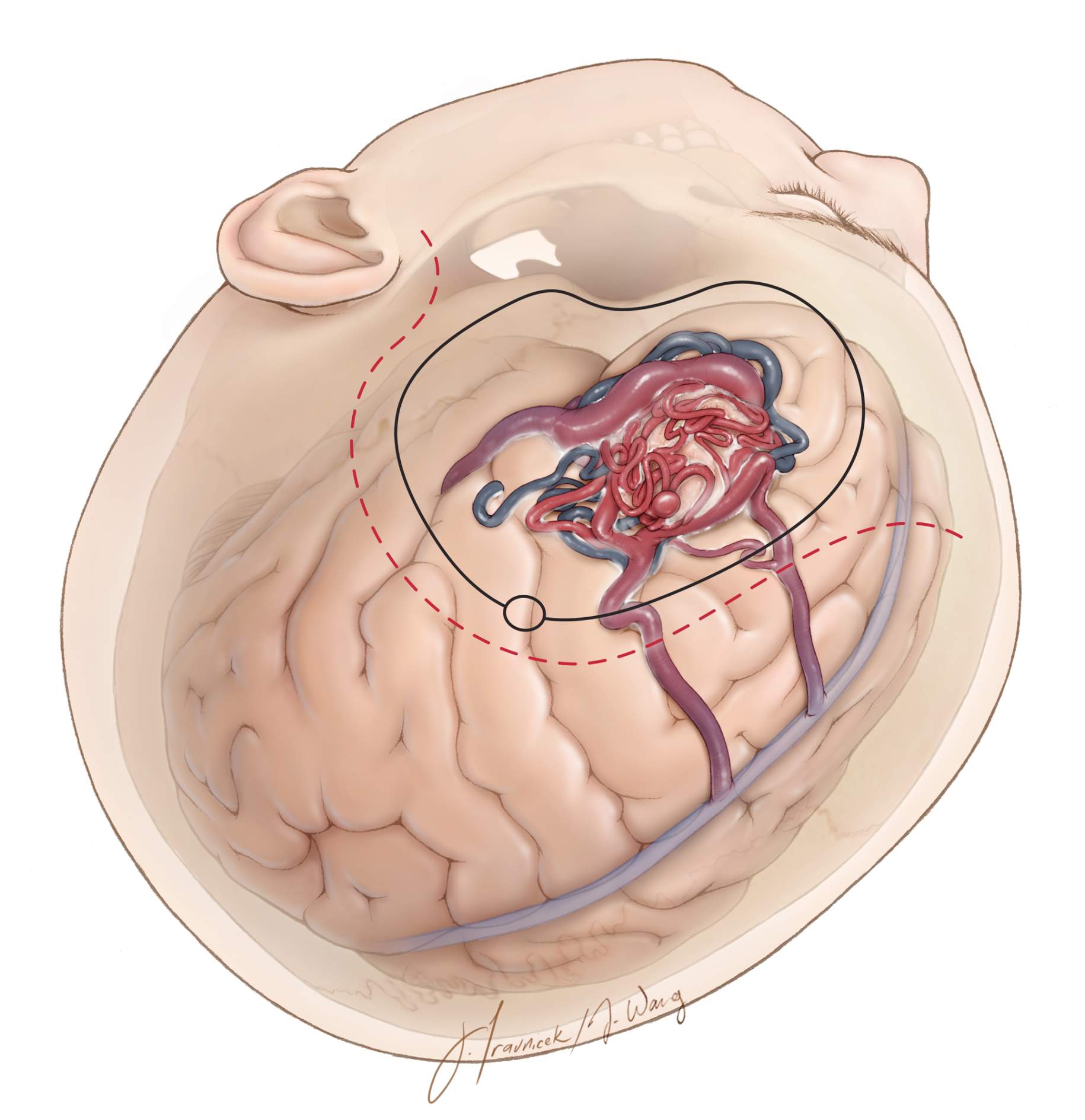What to Expect After AVM Removal?


Arteriovenous malformation (AVM) surgery can potentially improve the quality of life for those suffering from this complex vascular disorder.
As patients navigate the steps needed to seek treatment, understanding the effectiveness, procedures, and expectations of AVM surgery, as well as the recovery process, is essential.
Is Arteriovenous Malformation Surgery Effective?
An AVM is an abnormal group of arteries and veins that can form in the brain. These blood vessels develop direct connections with each other, eventually bypassing blood flow to healthy brain tissue. When this occurs, the AVM could deprive brain tissue of oxygen and nutrients from the blood. This can lead to chronic headaches, cognitive impairment, seizures, and the risk of ruptures and bleeding in the brain.
As with any craniotomy or brain surgery, AVM surgery involves a certain degree of risk. However, with a skilled and experienced neurosurgeon, the process can be effective and relatively low risk in treating and preventing complications, such as hemorrhage (bleeding) in the brain.
The success of AVM surgery depends on several factors, including the size, location, and complexity of the AVM, as well as the surgical team's expertise. More minor cases of AVM may be qualified for less invasive procedures, while some cases only need to be monitored.
However, some AVMs are more challenging to remove and require the skills of a specialist who can determine the appropriate treatment based on your unique situation.
What Does Arteriovenous Malformation Surgery Involve?
Arteriovenous malformation brain surgery involves the removal of a series of abnormal connections between arteries and veins in the brain. These connections can lead to a high-pressure blood flow through the AVM, which can cause bleeding or reduced oxygen supply to the surrounding tissues.
What happens during AVM surgery can vary depending on the type of surgical procedure most suitable for your condition. There are two main types of AVM surgery:
Why should you have your surgery with Dr. Cohen?
Dr. Cohen
- 7,500+ specialized surgeries performed by your chosen surgeon
- More personalized care
- Extensive experience = higher success rate and quicker recovery times
Major Health Centers
- No control over choosing the surgeon caring for you
- One-size-fits-all care
- Less specialization
For more reasons, please click here.
Microsurgical Resection
This is the most common type of AVM surgery. Surgeons perform a craniotomy where they remove a piece of the skull to access the AVM.
Using a surgical microscope and micro-instruments, your surgeon will disconnect the blood supply to the AVM before removing the AVM nucleus. The piece of the skull is then replaced before the incision on the scalp is closed.
Endovascular Embolization
This minimally invasive procedure uses a catheter, a long and flexible tube that can be inserted into a blood vessel, most commonly in your groin.
It enters through your arm or leg and then advances into the brain’s blood vessels. Once it reaches the AVM, a glue is administered that creates a blockage and prevents blood flow to the AVM. This procedure may be used before performance of microsurgical resection.
Stereotactic Radiosurgery
This non-invasive procedure does not involve actual surgery, but uses targeted radiation beams focused on the AVM. Within months to years of repeated treatment, the AVM will eventually shrink and close off, reducing the risk of potential bleeding from the AVM.
This process is only recommended for smaller and deep-seated AVMs where microsurgery can be risky. There is usually a 3-year delay from the time of application of radiosurgery until some benefit from radiation is noted (the risk of bleeding is eliminated.) During these 3 years, the risk of hemorrhage from the AVM exists.
What to Expect After AVM Surgery
If your doctor recommends a microsurgical resection, you may need to recover from the effects of this surgery. The area around the incision will be prone to pain, discomfort, soreness, and numbness, especially for the first week after your procedure.
Additionally, you may experience common post-surgical side effects, such as:
- Bruising and swelling around the eyes
- Chronic fatigue
- Cognitive issues
Following the procedure, you may be required to stay in the hospital for several days to be monitored by medical professionals. Additionally, some imaging tests and rehabilitation may be needed before you can be discharged.
What to Expect After AVM Removal
After you’ve been discharged from the hospital, you must focus on recovery. Recovery periods can vary among patients, though most patients observe limited activity for four to six weeks, followed by two to six months before making a full recovery.
During this time, you will need to have regular follow-up appointments with your doctor to ensure your surgical wounds are healing correctly. Any risk of other side effects, such as stroke, seizure, cognitive impairment, and hemorrhaging will also be monitored.
Additionally, expect your doctor to provide additional recovery and care instructions. These can include:
- Pain Management: You may be provided prescription medications to manage pain and discomfort.
- Activity Monitoring: Many patients experience chronic fatigue during the first few weeks of recovery. We recommend getting adequate rest to support your body’s recovery process.
- Rehabilitation: Some patients may require short-term physical, occupational, or speech therapy, especially if complications cause neurological deficits. If the AVM has hemorrhaged before surgery, the recovery process is more extensive.
- Follow-Up Consultations: Expect scheduled appointments at the four-week, six-week, three-month, and six-month marks of your recovery period.
Key Takeaways
AVM surgery may be necessary for patients to avoid the risk of hemorrhage from an AVM or to eliminate symptoms from a ruptured AVM.
While the effectiveness of AVM surgery will depend on factors such as the location and size of the AVM, the surgeon's experience, and the chosen procedure, advancements in technology and techniques have significantly improved success rates and patient outcomes.
Understanding realistic expectations and committing to a thorough recovery process is instrumental in ensuring the best possible results from AVM surgery.











